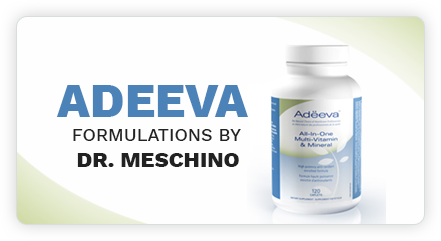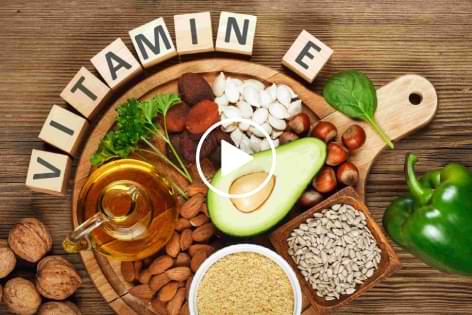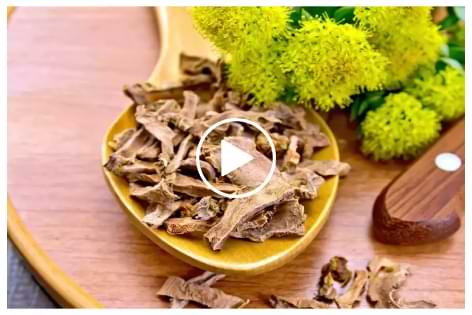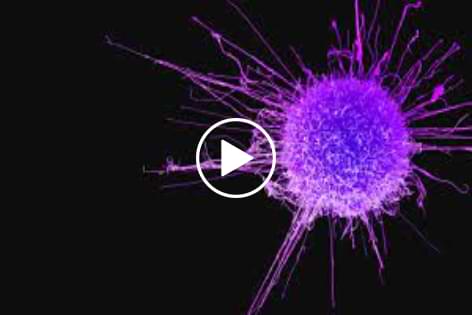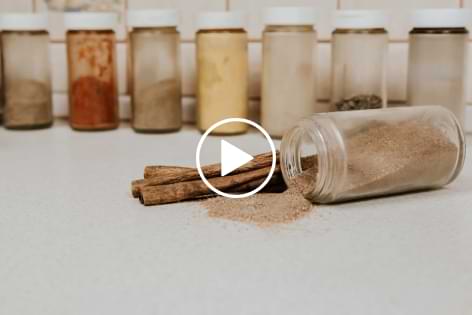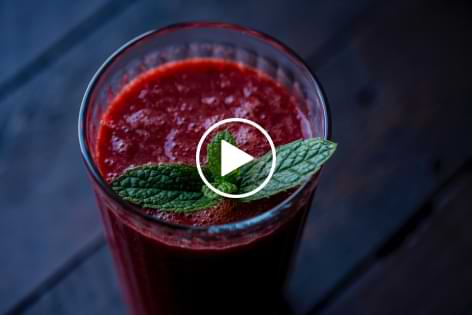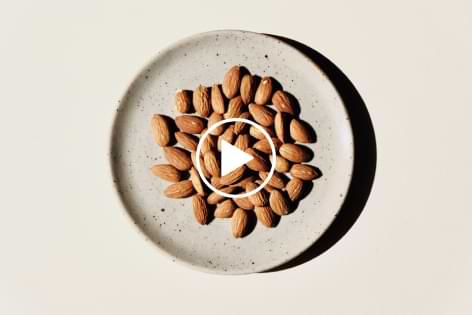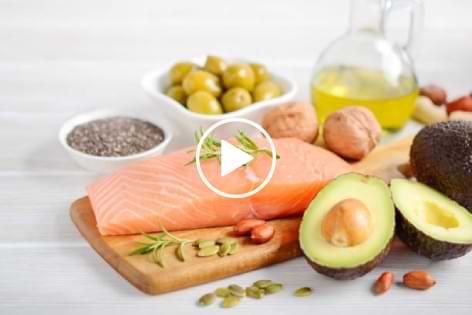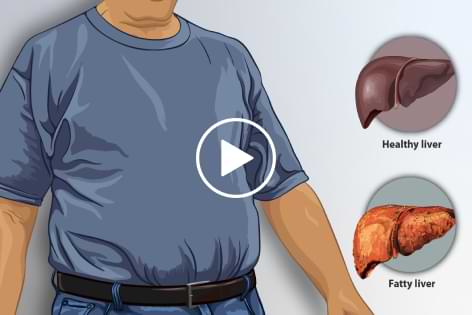
LMU – 71 Unlocking Liver Health: The Synergistic Impact of Probiotics, Omega-3 Fats, and Vitamin E
Source: United European Gastroenterology (UEG) Week 2017. Presented November 1, 2017
Lifestyle Medicine Update (November 10, 2017)
Introduction
In the landscape of modern health challenges, the prevalence of fatty liver disease has emerged as a significant concern, paralleling the rising rates of overweight problems, obesity, and type 2 diabetes. Characterized by inflammation and fat accumulation within the liver, this condition, medically referred to as “steatohepatitis,” poses a dual threat in the forms of alcoholic and non-alcoholic fatty liver diseases. The latter, commonly termed non-alcoholic steatohepatitis (NASH), is closely linked to obesity, diabetes, and metabolic syndrome. The progression of either manifestation to cirrhosis, an irreversible and life-threatening liver disease, has intensified the search for effective interventions. Enter nutritional medicine, where recent studies are revealing the potential synergy of vitamin E, probiotics, and omega-3 fats in combatting this menacing ailment.
The Rise of Fatty Liver Disease
As modern lifestyles become increasingly sedentary and dietary habits tend toward excess, a surge in overweight problems, obesity, and type 2 diabetes has been witnessed. In lockstep with these trends, the incidence of fatty liver disease, or steatohepatitis, has climbed, bringing to light the dire consequences of unchecked metabolic disturbances. Steatohepatitis encompasses inflammation and fat accumulation within the liver, a condition not solely confined to alcoholics. Its non-alcoholic variant, NASH, manifests in individuals with diabetes, obesity, and metabolic syndrome, representing a pre-diabetic state. Of utmost concern is the propensity of both forms to escalate into cirrhosis, an irreversible and life-threatening liver condition.
A Glimmer of Hope: Vitamin E and Fatty Liver
In 2012, a pivotal shift in treatment recommendations occurred when the American Association for the Study of Liver Diseases, the American College of Gastroenterology, and the American Gastroenterological Association endorsed the supplementation of vitamin E for fatty liver problems. This marked a significant step towards harnessing nutritional interventions to mitigate liver-related challenges.
The Emerging Trio: Probiotics, Omega-3 Fats, and Liver Health
In a twist of fate, a recent study has surfaced, unveiling a potent combination that could help reverse liver damage in patients afflicted by non-alcoholic fatty liver disease (NAFLD). This groundbreaking trial focused on 48 adults grappling with NAFLD, some of whom were also burdened by type 2 diabetes. The intervention involved administering a fusion of probiotics and omega-3 fats from flaxseed and wheat germ oil for a span of eight weeks, while a placebo group was concurrently monitored. The findings unveiled a remarkable reduction in the mean fatty liver index score, a comprehensive indicator encompassing various blood markers that signify liver inflammation and damage. Furthermore, this revelation was not an isolated incident; prior animal studies had already hinted at the symbiotic relationship between probiotics and omega-3 fats, echoing the outcomes of the present human trial.
The Microbial Symphony: Probiotics’ Role
The significance of probiotics, often colloquially referred to as “friendly bacteria,” cannot be understated. Their pivotal role in fostering a harmonious gut microbiome is believed to wield a twofold impact: suppressing the release of inflammation-promoting chemicals by less amicable bacterial entities and potentially secreting beneficial substances that traverse the bloodstream and exert protective effects on the liver. This dual-pronged mechanism underlines the capacity of probiotics to modulate liver health at its core.
Omega-3 Fats: A Multi-Faceted Shield
The inclusion of omega-3 fats in this liver-boosting equation introduces a multifaceted layer of protection. Known for their ability to impede cell division and curb inflammation, omega-3 fats present a mechanism that holds promise in the reduction of cirrhosis development and the reversal of fibrotic damage in liver cells. This is just one facet of their comprehensive impact on overall health and disease management.
The Promise of Nutritional Medicine
The convergence of probiotics, omega-3 fats, and vitamin E as potent tools in the battle against non-alcoholic fatty liver disease underscores the influence of nutritional medicine in both disease prevention and complementary management. The foundation laid by research in this realm speaks volumes about the intrinsic connection between the foods we consume, the exercise we engage in, and the supplements we choose to integrate into our lives, and the modulation of our health and healthy life expectancy.
A Glimpse into the Future
While the current findings shine a light on the potent partnership between probiotics, omega-3 fats, and vitamin E, the journey of discovery continues. As the scientific community delves deeper into the intricacies of liver health, it is likely that additional mechanisms through which these interventions exert their effects will be unearthed. The tantalizing potential of these nutritional powerhouses in shaping liver function invites further exploration and innovation in the field of medical science.
Conclusion
In a world grappling with escalating rates of fatty liver disease, the convergence of nutritional medicine and scientific inquiry offers a glimmer of hope. The triumphant trio of probiotics, omega-3 fats, and vitamin E emerges as a formidable ally in the war against non-alcoholic fatty liver disease. The potential to reverse damage and enhance liver health through these interventions speaks to the profound impact of lifestyle choices and dietary supplementation. As researchers continue to unearth the underlying mechanisms driving these effects, the horizon of possibilities in liver health management expands, marking yet another triumph for the realm of nutritional medicine.
References
- American Association for the Study of Liver Diseases. (2012). Vitamin E and Fatty Liver Disease. Retrieved from
https://www.aasld.org/sites/default/files/2020-02/Vitamin%20E%20and%20Fatty%20Liver%20Disease.pdf - Medscape. (2017). Probiotics, Omega-3s Reverse Fatty Liver Disease. Retrieved from
https://www.medscape.com/viewarticle/887955?nlid=118860_1842&src=WNL_mdplsfeat_171107_mscpedit_wir&uac=62515BJ&spon=17&impID=1476698&faf=1 - Mayo Clinic. (2023). Non-alcoholic Fatty Liver Disease. Retrieved from
https://www.mayoclinic.org/diseases-conditions/nonalcoholic-fatty-liver-disease/symptoms-causes/syc-20354567
Eat Smart, Live Well, Look Great,
Dr. Meschino

Dr. James Meschino
ABOUT THE AUTHOR
Dr. James Meschino, DC, MS, ROHP, is an educator, author, and researcher having lectured to thousands of healthcare professionals across North America. He holds a Master’s Degree in Science with specialties in human nutrition and biology and is recognized as an expert in the field of nutrition, anti-aging, fitness, and wellness as well as the author of numerous books.

